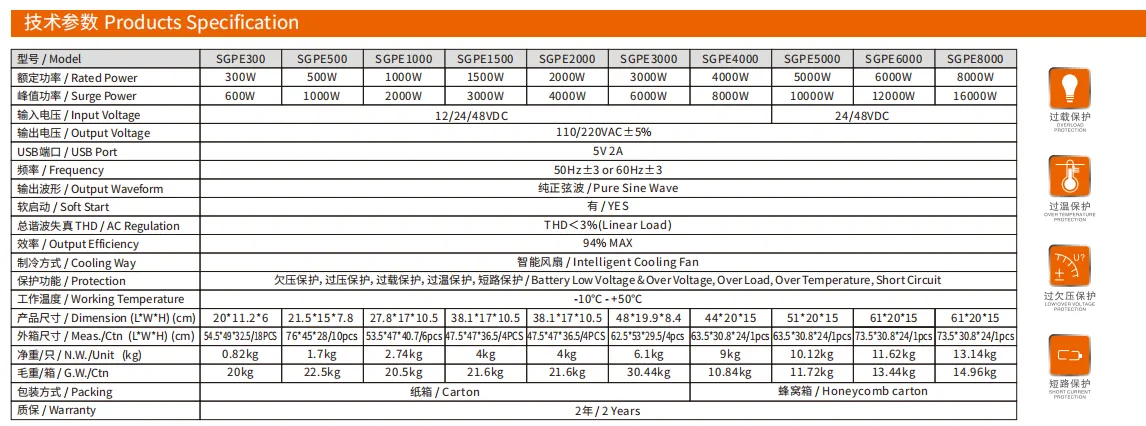Understanding the Dimensions and Efficiency of a 300 Watt Solar Panel for Optimal Installation
Understanding the Size of a 300 Watt Solar Panel
As the world increasingly turns to renewable energy sources, solar power has emerged as a leading option for both residential and commercial energy solutions. Among the various solar panel options available on the market, the 300-watt solar panel has gained considerable popularity. However, potential users often have questions regarding its size, efficiency, and installation requirements. This article will explore the physical dimensions of a 300-watt solar panel and its implications for solar energy systems.
Dimensions and Design
Typically, a 300-watt solar panel is designed with efficiency and compactness in mind. Most 300-watt panels have dimensions around 65 inches (165 cm) in height and 39 inches (99 cm) in width, with a thickness of about 1.5 inches (3.8 cm). These panels are usually made up of either monocrystalline or polycrystalline solar cells, with monocrystalline panels often being slightly smaller due to their higher efficiency rating. The lightweight design makes them easier to handle and install, further facilitating their use in various applications.
Wattage and Efficiency
The wattage rating of a solar panel refers to the maximum power output it can generate under ideal conditions. A 300-watt solar panel is generally efficient enough to support the energy needs of several household appliances. The efficiency of these panels is critical, as it determines how much sunlight can be converted into electricity. Monocrystalline panels are known for their higher efficiency levels, often exceeding 20%, while polycrystalline panels may have efficiencies ranging from 15% to 18%. This efficiency means that for a given area, monocrystalline panels could generate more power than their polycrystalline counterparts.
Power Needs and Array Size
size of a 300 watt solar panel

When determining how many 300-watt solar panels are needed for a specific installation, one must consider the total energy demands of the household or business. For instance, a typical home consumes about 900 kWh per month. If we assume ample sunlight exposure and optimal conditions, a single 300-watt panel can produce approximately 1.5 kWh per day. Thus, to cover all monthly energy needs, one would require around 20 panels, assuming peak sunlight hours and panel performance. This simple calculation highlights the importance of combining panel size, wattage, and energy needs to determine the overall size of the solar array.
Space Considerations
In addition to energy needs, space considerations play a crucial role in the decision to install solar panels. With the typical size of a 300-watt solar panel requiring around 18 square feet (1.7 square meters) for installation, homeowners must account for roof space or ground area in their planning. Effective layout designs can help maximize energy production while ensuring that the panels receive optimal sunlight exposure throughout the day.
Installation and Mounting
The installation of 300-watt solar panels can be carried out on rooftops or through ground-mounted systems. Rooftop installations typically require appropriate mounting hardware suited for the specific roof type, while ground-mounted options may involve additional structures to secure the panels against wind and environmental factors. Proper installation ensures the longevity and efficiency of the panels, highlighting the need for professional services if one is unfamiliar with DIY installations.
Conclusion
In summary, the size and specifications of a 300-watt solar panel make it a versatile choice for solar energy systems. Its moderate dimensions, high efficiency, and suitability for various applications contribute to its popularity among solar energy users. As more people seek to harness the power of the sun, understanding the size and capabilities of these solar panels will be essential for making informed energy decisions, ultimately aiding in the transition to more sustainable energy sources.
-
Navigating Off Grid Solar Inverter: From Use Cases to Trusted PartnersNewsAug.05,2025
-
Solar Edge String Inverter: A Wholesaler’s Guide to Inverter Technology SelectionNewsAug.05,2025
-
Microinverters: Revolutionizing Solar Energy UseNewsAug.05,2025
-
Future of Monocrystalline Solar Panel Efficiency: Latest Technological AdvancesNewsAug.05,2025
-
Solar Panels for House: A Complete Guide to Residential Solar EnergyNewsAug.05,2025
-
Panel Bifacial Performance in Snow and Low-Light ConditionsNewsAug.05,2025







